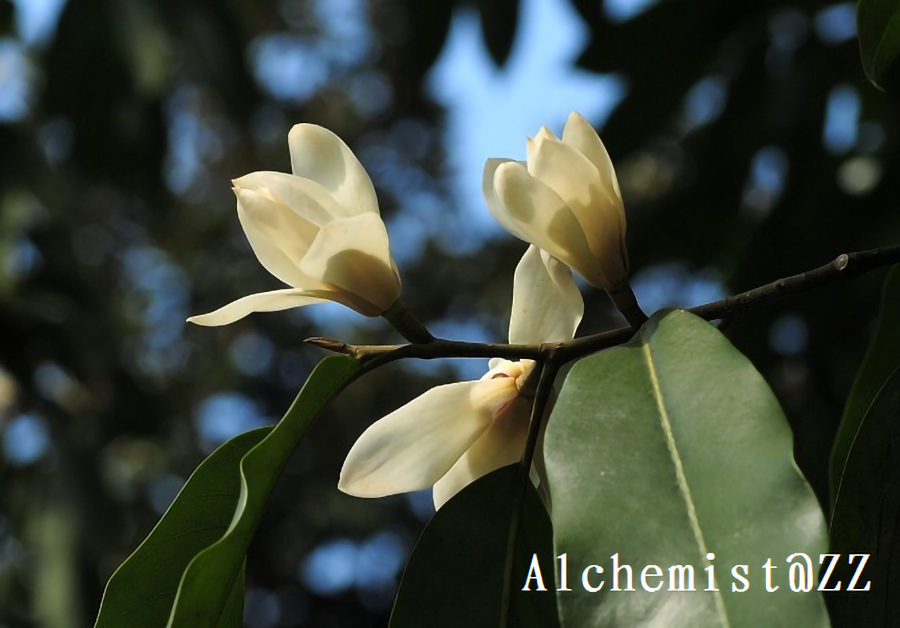- Scientific Name: Magnolia cavaleriei (Finet & Gagnep.) Figlar
- Ref: Proc. Int. Symp. Magnoliac. 1: 21, 2000.
- Chinese Common Name: 平伐含笑 Píngfá hánxiào
- Family: Magnoliaceae
- Genus: Magnolia
- Subgenus: M. subg. Yulania
- Section: M. sect. Michelia
- Subsection: M. subsect. Michelia
- Distribution: Forests; 800-2400 m. Fujian, E and N Guangdong, Guangxi, Guizhou, W Hubei, SW Hunan, SE Sichuan, Yunnan.
Trees, 10-20 m tall, to 50 cm d.b.h., many branched. Bark grayish white. Young twigs, buds, petioles, leaf blade abaxial surfaces when young, brachyblasts, and fruiting brachyblasts silvery to reddish brown appressed pubescent. Twigs black. Petiole 1.5-3 cm, becoming black with age, without a stipular scar; leaf blade narrowly oblong to narrowly obovate-oblong, 10-20(-24) × 3.5-7 cm, thinly leathery, abaxially glaucous and silvery to reddish brown pubescent, adaxially with remaining trichomes, midvein impressed, secondary veins slender, 11-15 on each side of midvein, reticulate veins dense and prominent on both surfaces, base cuneate to broadly cuneate, apex acuminate to shortly acute. Brachyblasts 1.5-2.5 cm, with 1 or 2 bract scars; spathaceous bracts densely reddish brown appressed villous. Flower buds narrowly ovoid, ca. 3 cm. Tepals 9 or ca. 12, white, papery, with pellucid glands; outer 3 tepals obovate-elliptic, 2.5-7 cm, gradually narrower and smaller inward. Stamens 1.2-1.4 cm, grayish yellow pubescent; connective exserted and forming a ca. 1 mm tip; anthers ca. 8 mm, dehiscing introrsely. Gynophore ca. 4 mm; gynoecium narrowly ovoid, ca. 1 cm; carpels ca. 4 mm; ovaries ovoid, densely puberulous; styles grayish yellow pubescent, nearly as long as ovaries. Fruit 5-15 cm; mature carpels obovoid to ellipsoid, 1.5-2 cm, white lenticellate, 2-valved, apex rounded to rarely mucronate. Fl. Mar-Apr, fr. Sep-Oct. 2n = 38*. (Flora of China)
